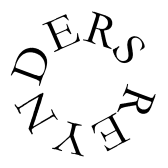

|
|
|
|
RUCHENITSAIf you want to become familiar with odd-time, get into bulgarian/macedonian/albanian music. Balkan is _the_ motherland and fatherland of odd time, which is otherwise called aksak - term by Bela Bartok, derived from a turkish word which means "limping". The aksak idea of rhythm is very different from african rhythm. African rhythm is about _dividing_ a constant period of time into an "easy" (2,3,4) number of beats, then subdividing them into sub-beats etc. Aksak rhythm is about _grouping_ beats into groups of small number of beats (2,3,4), and assembling complex rhythms from such groups, so that each rhythm has a constant sequence of groups. The total of beats in the whole sequence may be very odd: 25/16 is not a rare phenomenon! For example: ruchenitsa - the most popular dance in Bulgaria - is assembled from three groups. First two are 2-s and the remaining is 3. So, ruchenitsa counts 2+2+3, which produces 7, and this is what you're looking for. There are three basic families of rhythms in 7 on the Balkan. Ruchenitsa: 7/16, counted 2+2+3, or just 4+3 Try this djembeized ruchenitsa beat: "feeling" |* . . . * . .|* . . . * . .| count |1 2 3 4 1 2 3|1 2 3 4 1 2 3| * - start here dj 1 |S . S t S . s|S . T t S . t| dj 2 |B s S . t T .|. T s . T t .|>> |B t s . t T .|s T s . T t .|(handing may be adjusted) san |. . . . x . x|x . . . x . .| |. . . . . . .|O . O . O . .| dun |x . . . . . .|. . x . . . .| |O . O . . . .|. . . . . O .|
|